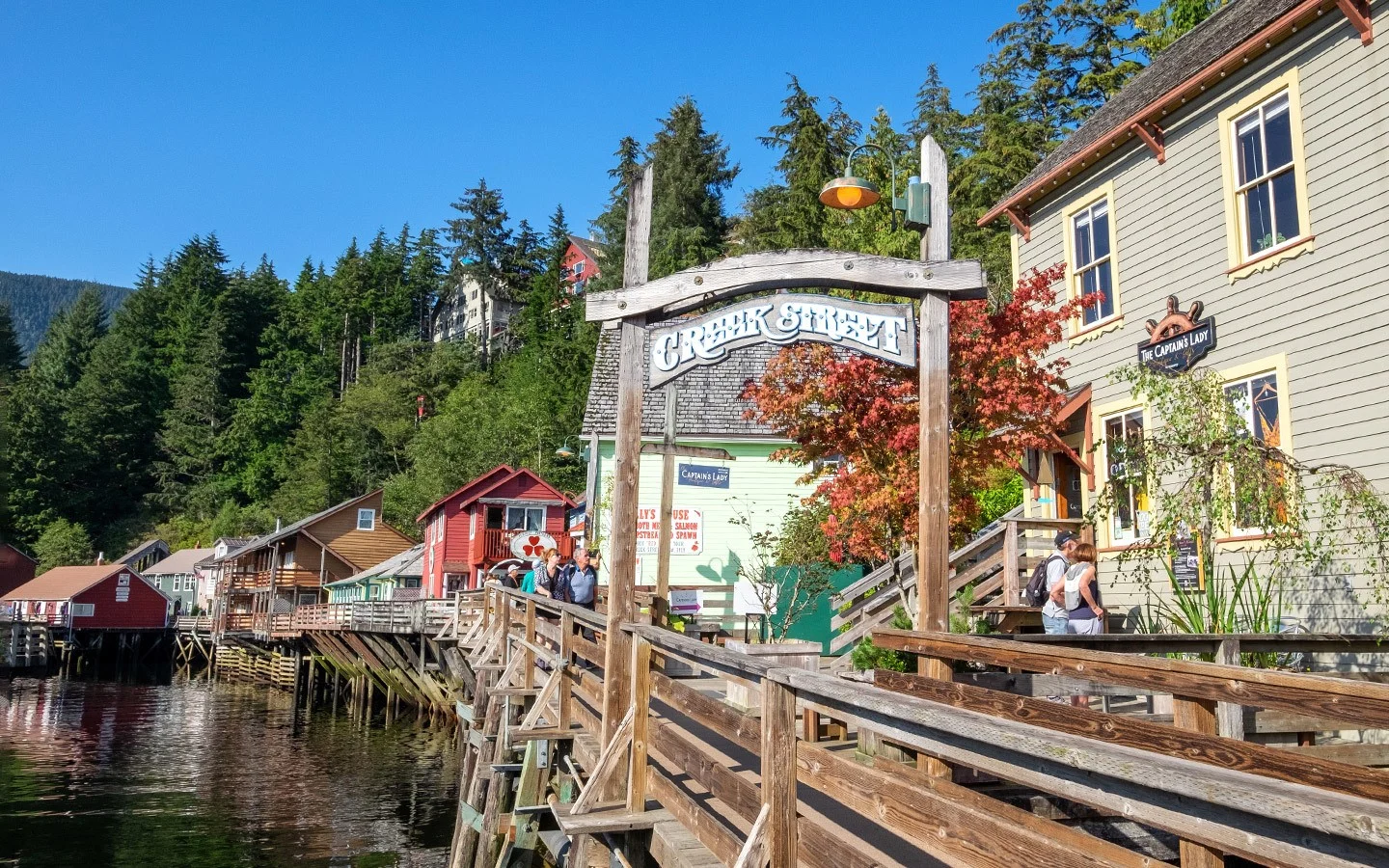
Picture Alaska and you’ll probably see images of glaciers, mountains, lakes, oceans, forests and wildlife – Alaska is all about nature in all its picturesque glory. But one aspect of the state that doesn’t get so much of a mention is its towns and cities. If you’re on a cruise, the ports of call are usually seen as gateways for nature activities rather than destinations in their own right.
But these towns and cities have some interesting stories of their own. My favourite Alaskan cruise stop was the historic frontier town of Ketchikan, and right at the heart of it you’ll find Ketchikan’s Creek Street – colourful, quirky and with a few scandalous tales to tell.
Read more: How to choose the perfect Alaska cruise
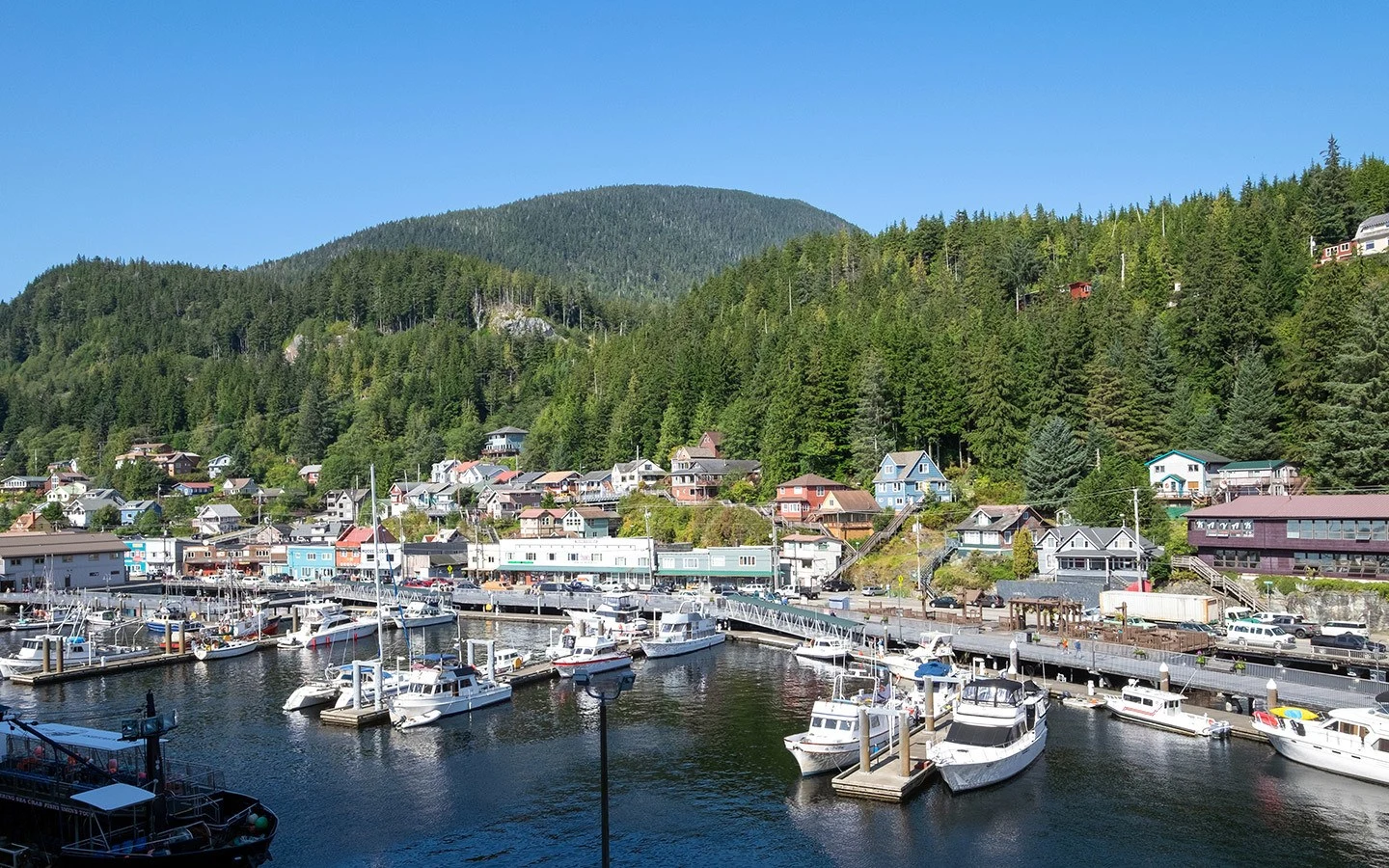
Ketchikan waterfront
About Ketchikan
Ketchikan is located in south-eastern Alaska on the western coast of Revillagigedo Island. It’s on the edge of the Tonglass National Forest, which is the largest forest in the US. It’s also the wettest, with rain on 300 days a year in Ketchikan – so don’t let my blue-sky photos fool you into forgetting your umbrella! Modern Ketchikan runs along the waterfront, backed by steep forested mountains, and is a centre for tourism as well as the ‘salmon capital of the world’.
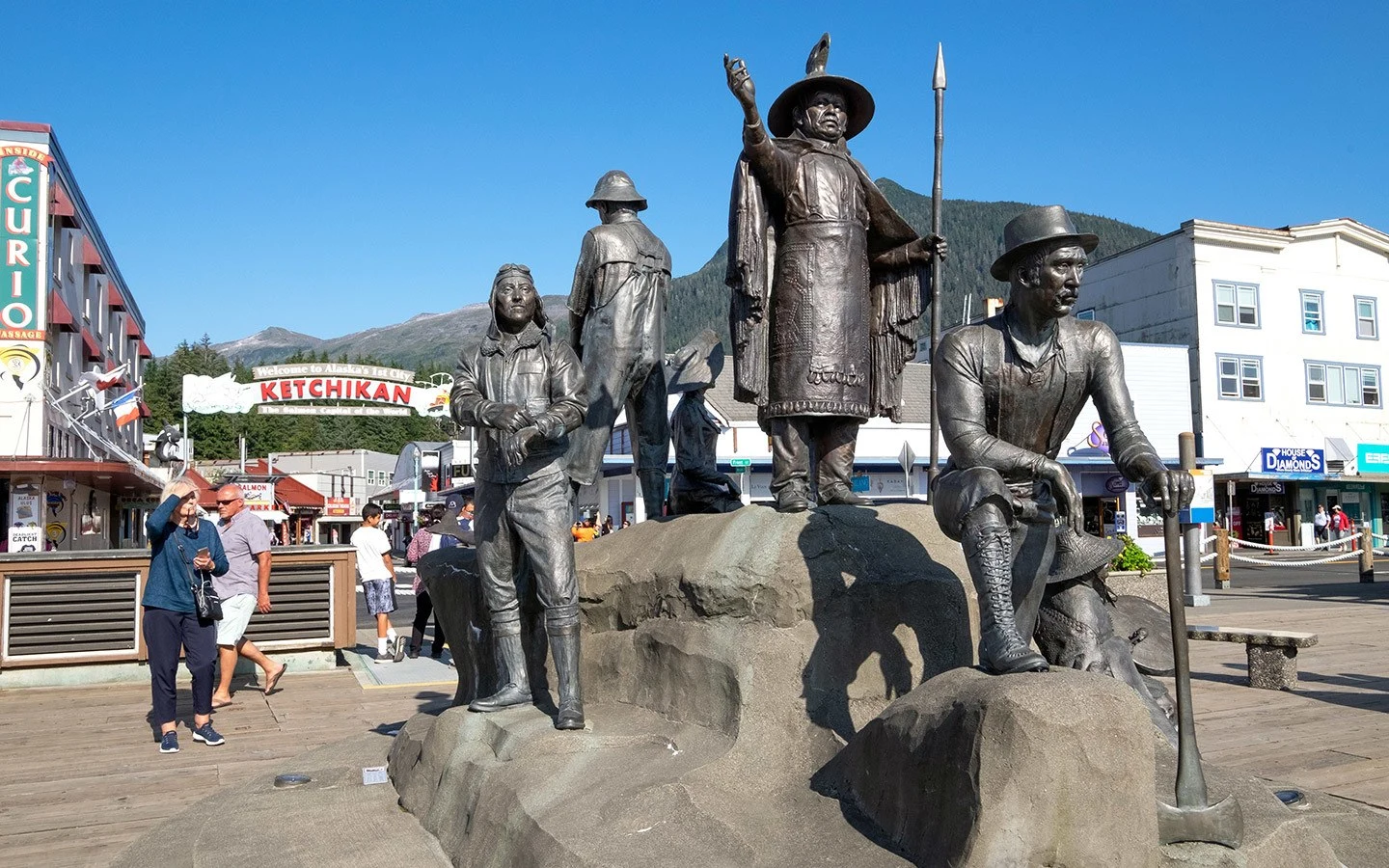
Welcome to Ketchikan
And it’s the salmon that brought the first settlers to the area – the native Tlingit people, who gave Ketchikan its name, meaning ‘thundering wings of an eagle’. In 1885, European explorers moved in, attracted by the plentiful supplies of salmon, halibut and timber. Irishman Mike Martin bought up 160 acres of land and founded a salmon cannery and trading post. And at the end of the century they were joined by prospectors hunting for gold and copper.
This influx of loggers, miners and fishermen helped make Ketchikan the largest community in the state. And where you get a concentration of single men, you get businesses springing up to cater for their needs! Ketchikan developed a real Wild West, frontier town feel, attracting fortune-hunters, petty criminals, gamblers, bootleggers and prostitutes. By the start of the 19th-century it was known as ‘Alaska’s wickedest city’, with the epicentre of sin at Creek Street.
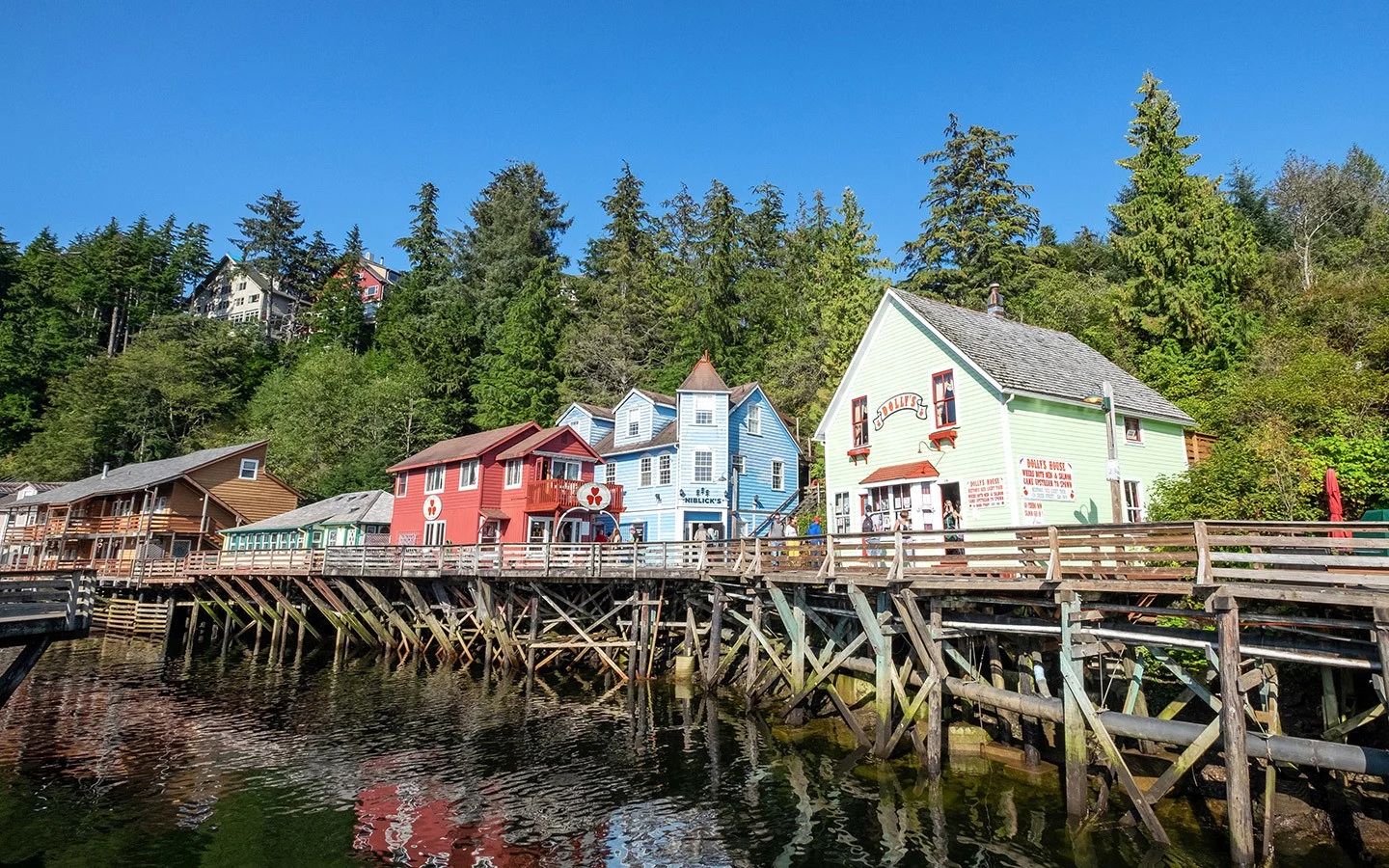
Colourful Creek Street
The history of Ketchikan’s Creek Street
Creek Street is not so much a street as a boardwalk, with a row of houses built on wooden stilts above Ketchikan Creek. It might seem like a lot of effort to build them over the water, but it was easier than trying to cut into the rocky hillside to the other side of the creek. The street sprung up after 1903 when the city council ordered all brothels had to be relocated to ‘Indian Town’ on the other side of the creek to keep them away from the more ‘respectable’ side of town.
By the mid-1920s, miners, fishermen, loggers and tradesmen were coming from all across southern Alaska for some R&R in Ketchikan. And Prohibition helped contribute to a boom in Creek Street’s trade. Bootleggers would smuggle Canadian whiskey across the border, then at high tide they would row up the creek under cover of darkness and unload their cargo through trapdoors hidden away underneath Creek Street’s boardwalk houses.
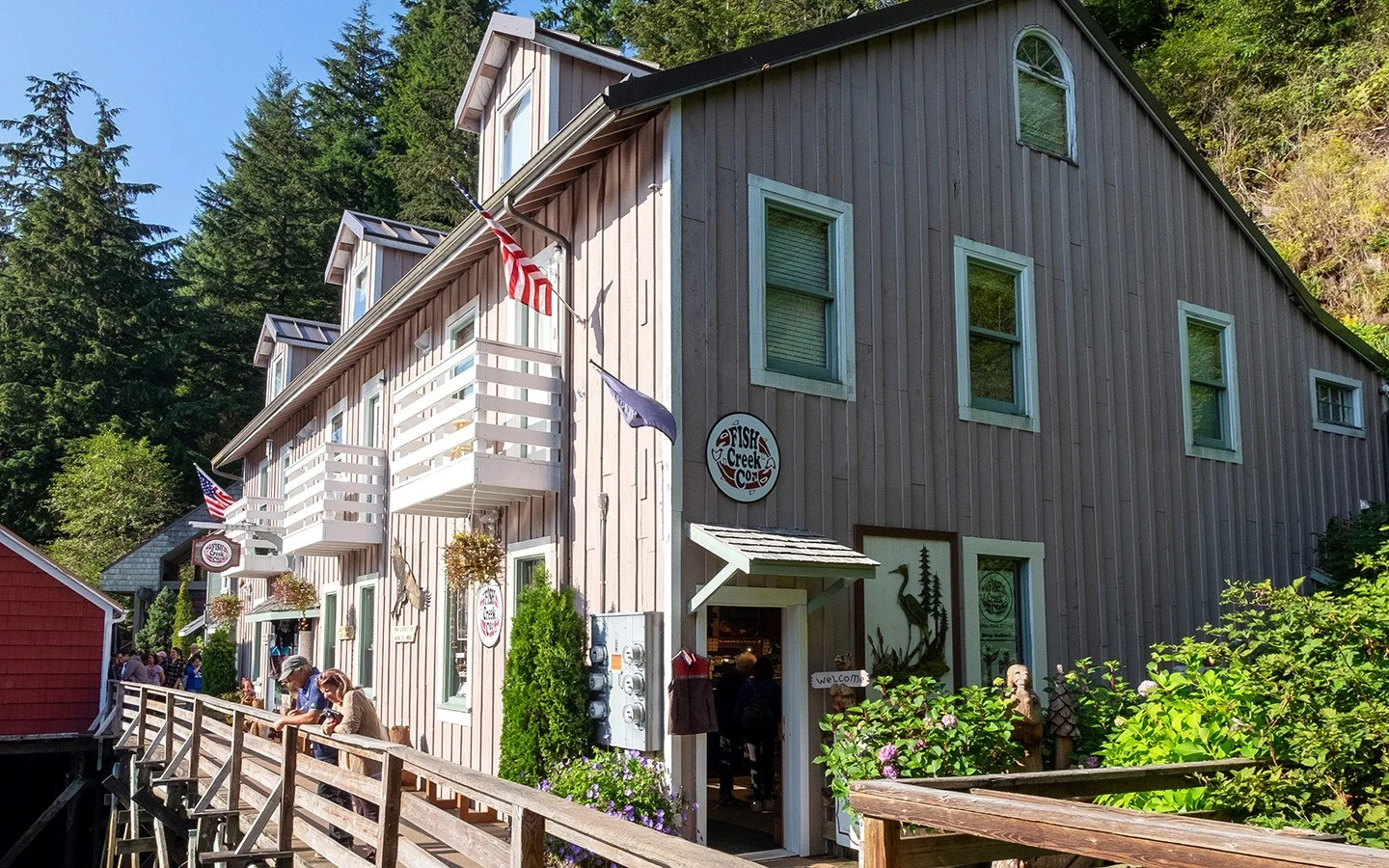
Boardwalk houses in Creek Street
At its peak Creek Street was home to 30 brothels and up to 100 working girls – most operating out of private houses which had just one or two girls living there, so they would be classed as a residence not a brothel and wouldn’t be inspected by the police. The industry carried on after Prohibition into the 1950s, with the local police and council turning a blind eye as it brought plenty of money into the community, both from the girls and their customers.
But after protests from local church leaders and women’s groups, Ketchikan finally banned prostitution in 1953. Some girls moved on, others retired and stayed in Creek Street. However storm and fire damage meant its buildings were starting to crumble by the 1960s, but a growth in tourism in the 1970s saw developers buy them up after seeing their potential.
Since then local residents have helped restore and preserve Creek Street’s historic buildings. The street’s become the town’s biggest tourist attraction, with its colourful style and quirky story meaning it’s now listed on the United States National Register of Historic Places.
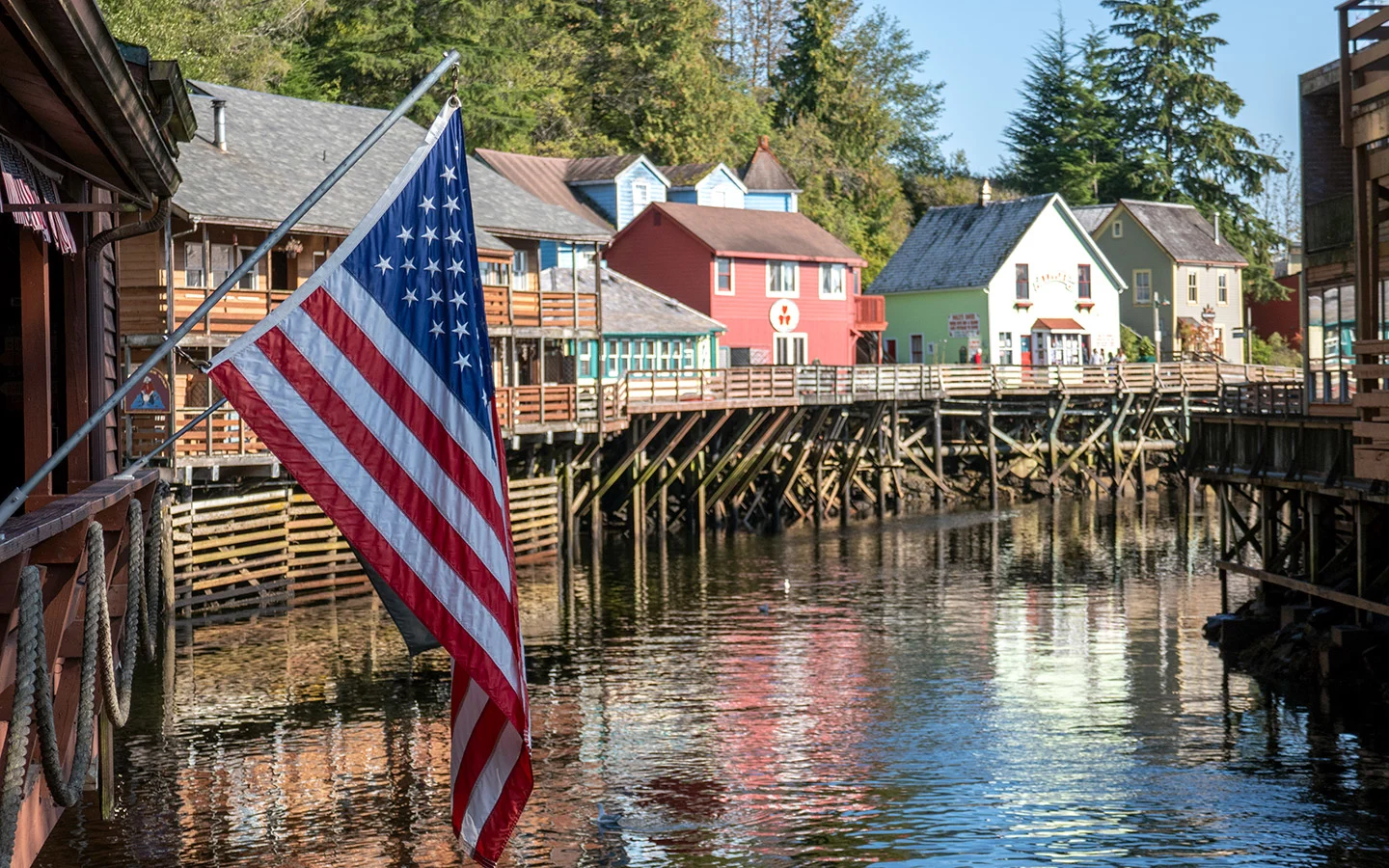
Along the waterfront
What to see and do at Creek Street, Ketchikan
With its brightly painted wooden houses now home to a mix of shops, restaurants and private houses, Creek Street is eminently respectable today. It’s still one of Ketchikan’s commercial hubs – except what’s on sale now is more PG-rated than in the 1920s. Think galleries and gift shops selling local artworks, totem poles, mineral jewellery and everything salmon related.
But you can still get a glimpse of life in its more controversial heyday at Dolly’s House – the former home of Ketchikan’s most famous madam. Thelma Dolly Copeland was born in Idaho in 1888 and left home at 13 after a difficult childhood. After a few years fending off admirers working as a waitress in Vancouver, she decided to cash in on her assets, reinventing herself as Dolly Arthur, moving to Ketchikan and buying a house at 24 Creek Street in 1919.
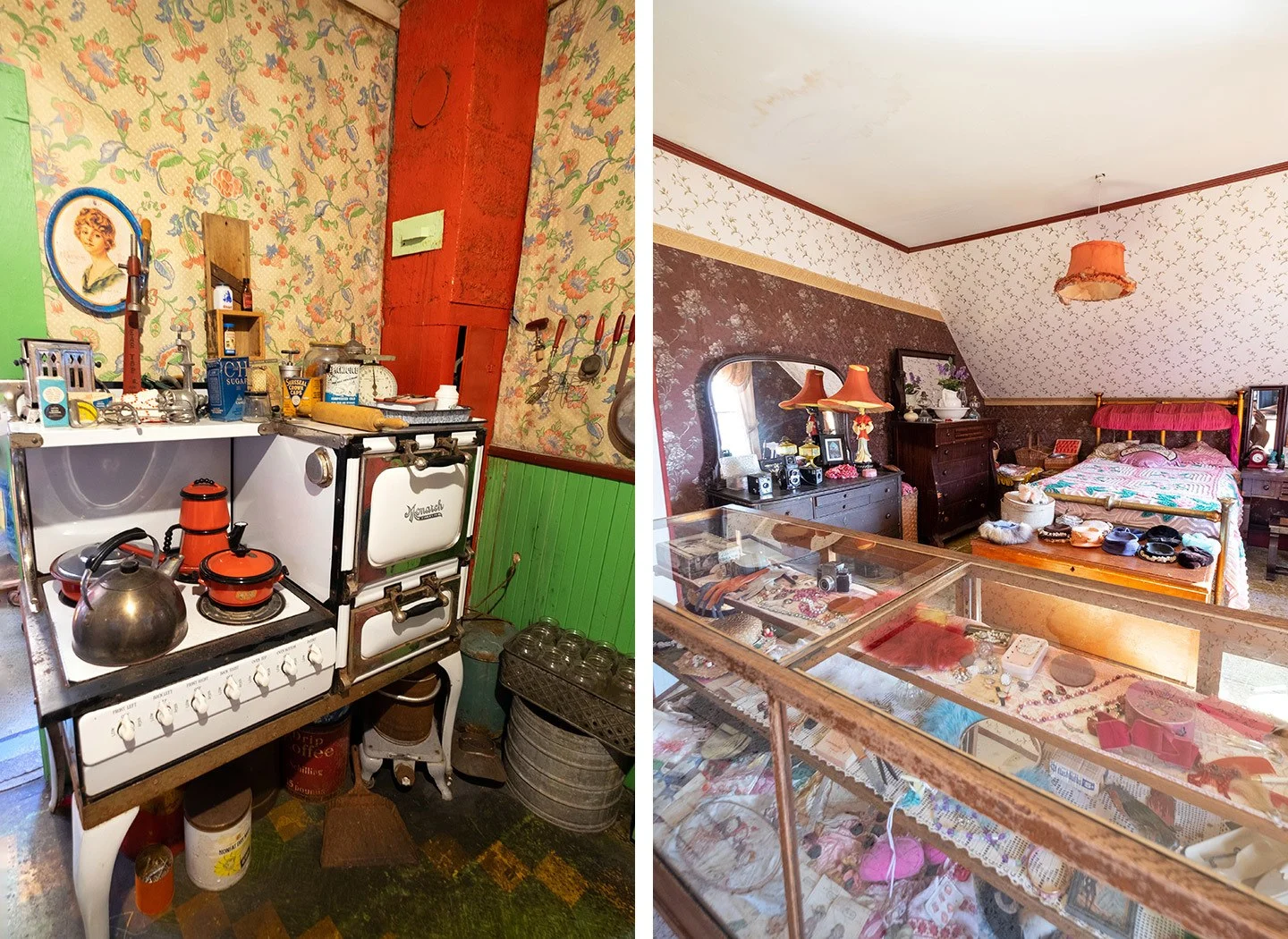
Inside Dolly’s House
In the 1920s, opportunities for women were limited, but brothels gave female entrepreneurs the opportunity to buy land and run their own business. And Dolly did well out of it. Prostitution was legal but alcohol wasn’t, and she made her money from selling bootleg booze. Dolly ‘retired’ in 1953 when prostitution was made illegal, but stayed in her house until she eventually had to move to a nursing home not long before her death in 1975 at the age of 87.
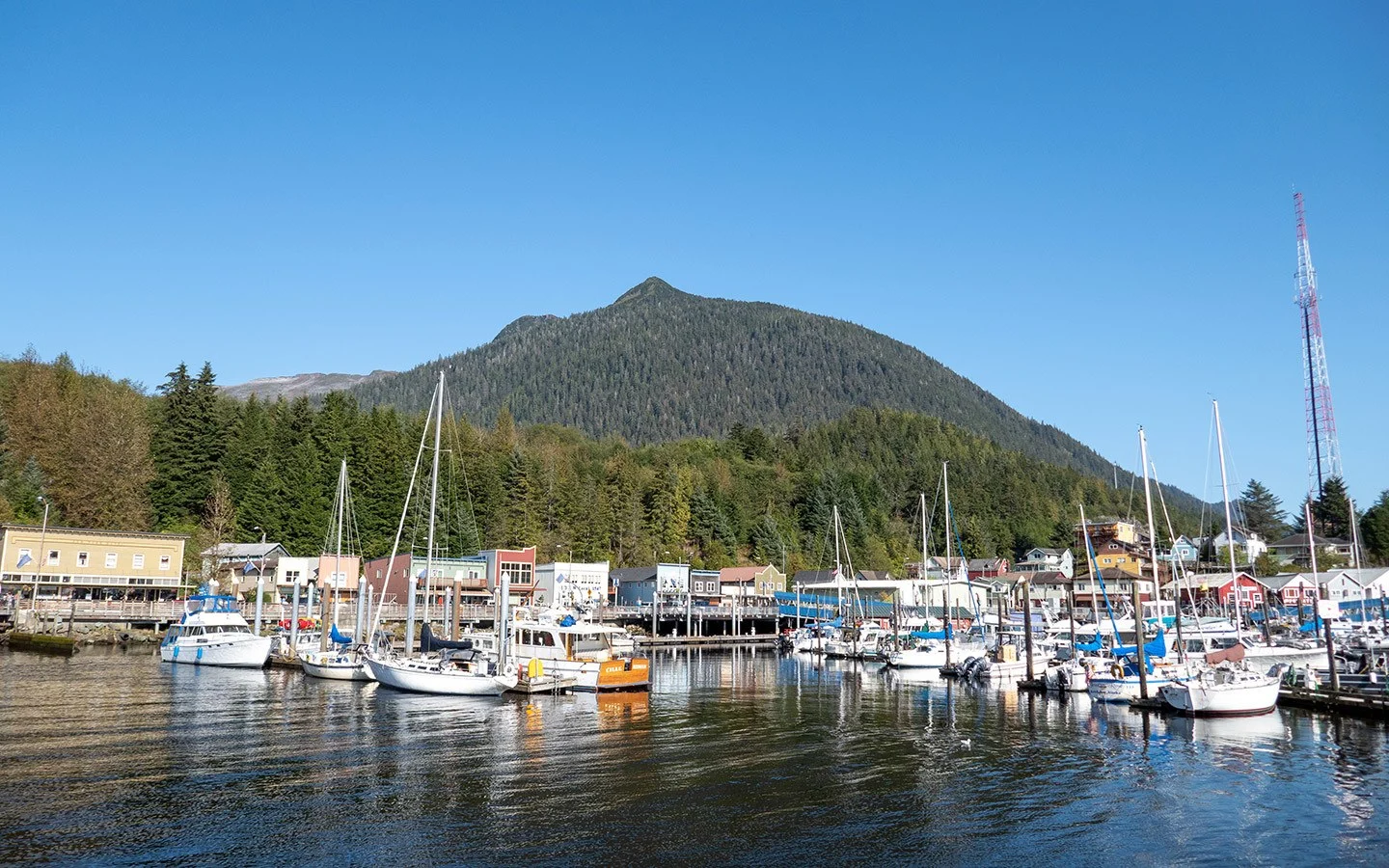
The harbour in front of Creek Street
The house – the last of Ketchikan’s Creek Street’s brothels – has now been turned into a museum. Guides tell Dolly’s story and you can explore the house, left as it would’ve been when she lived there. With photos of her, her dresses and make up, piles of magazine and the secret cupboard where she’d stash the whiskey, it almost feels like she’s just walked out.
Set behind Dolly’s House you’ll find the Married Man’s Trail. This pathway up into the hillside was a favourite cut-through for married men trying to keep a low profile. They could get in and out of the brothels more discreetly than going in through the front entrance, as well as it making for an easy escape route in case there were police raids.
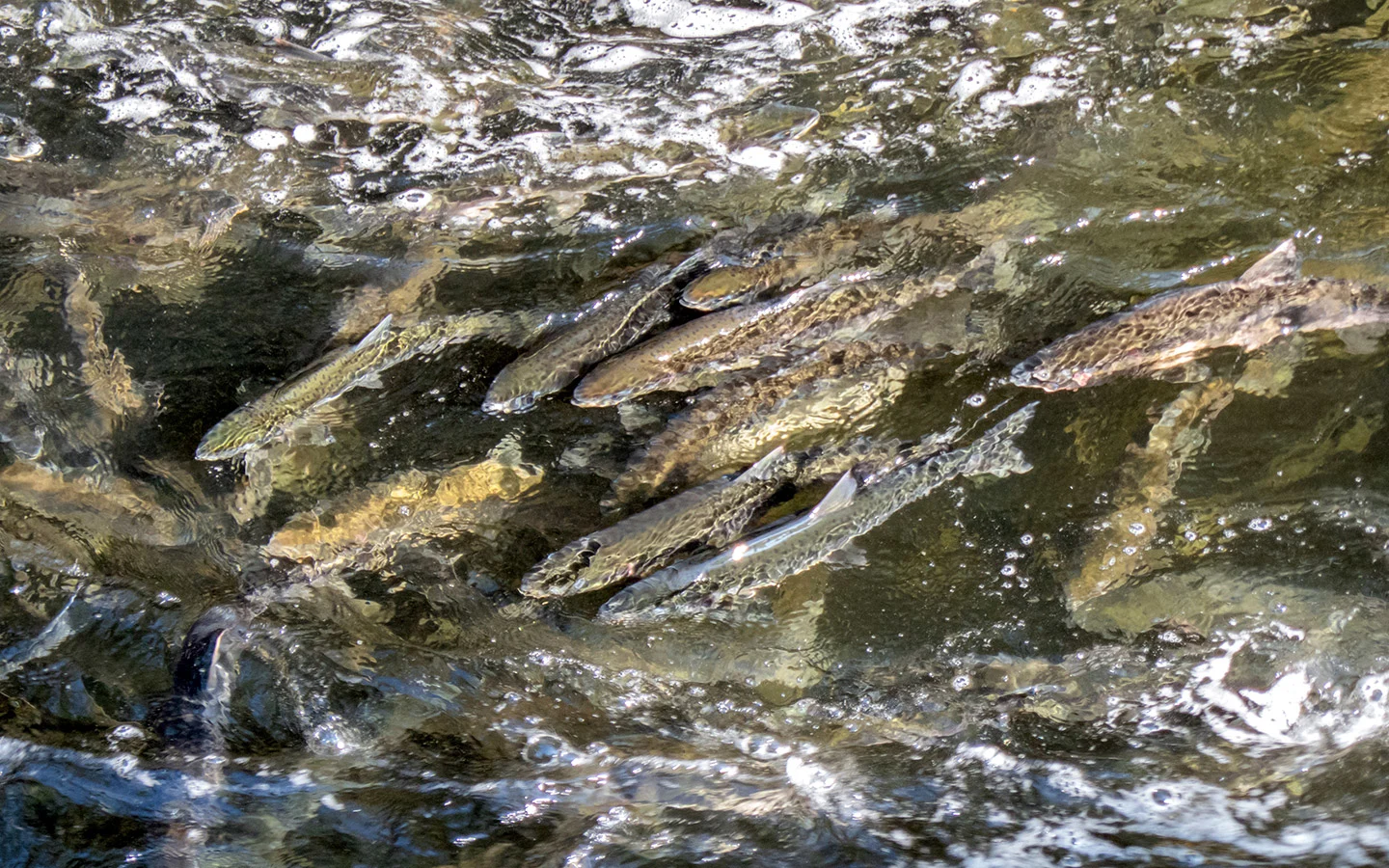
Rivers packed with salmon
The path was just a muddy trail, but is now a pathway and boardwalk, talking you along the river to the salmon ladder. Ketchikan’s rivers still teem with salmon, and from late July until September they migrate upstream, leaping their way up the rapids. The ladder was built to help them over the worst, but it’s still an amazing achievement watching them travel upstream. Look out for seals, otters, eagles and seagulls trying to pick a few off along the way too.
And if you want to try and catch your own salmon, you can hire a rod and bait. You’ll also need a fishing licence but can pick that up from hire shops by Stedman Bridge. If you’re on a cruise you can usually arrange for your catch to be vacuum-packed and sent home for you.
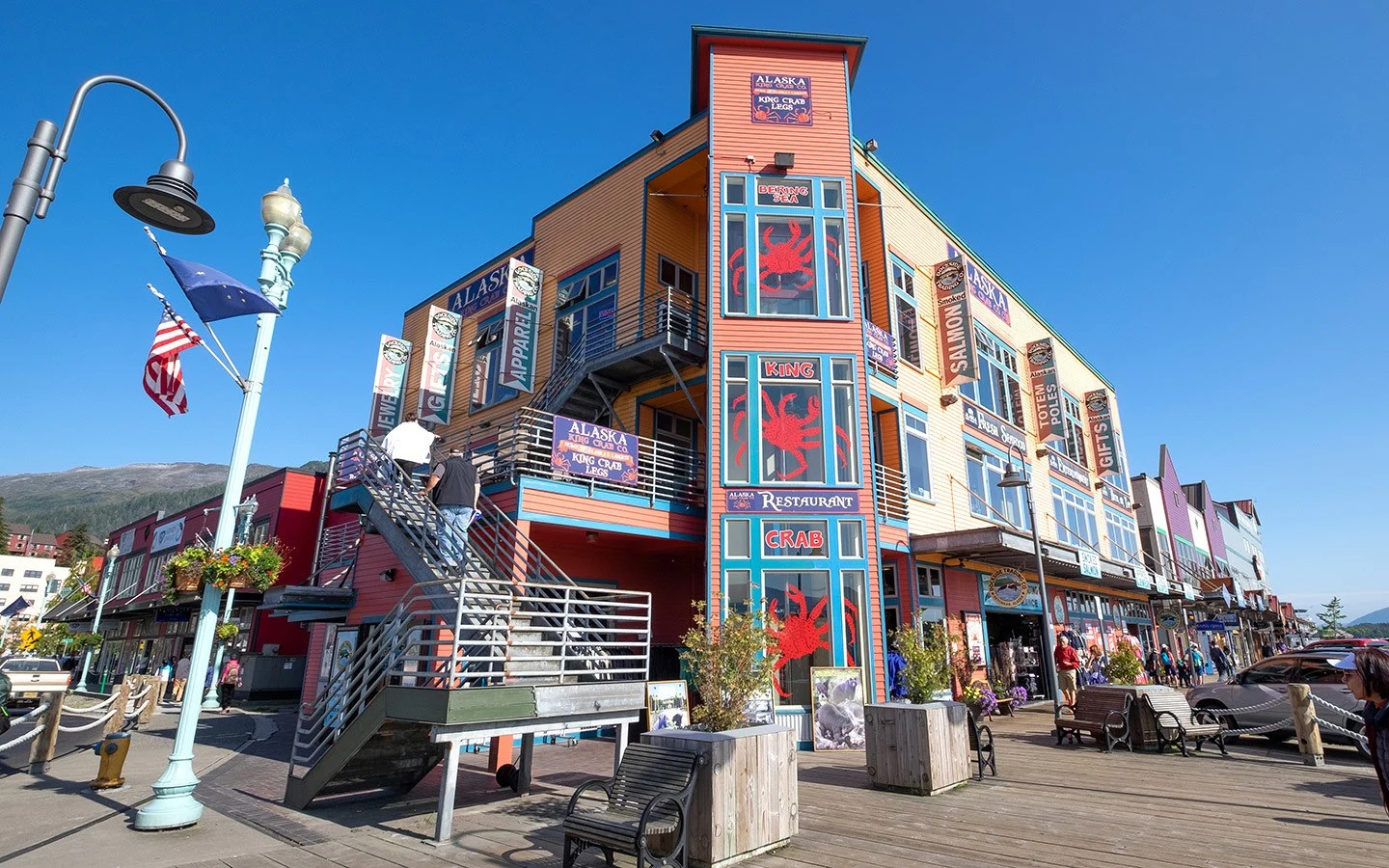
Ketchikan seafood
The details
Ketchikan is a popular stop on Alaskan cruise itineraries, but you can also travel there independently by boat or plane. Alaska Marine Highway System car ferries connects coastal destinations across Alaska to Prince Rupert in Canada and Bellingham in Washington State. Ketchikan’s airport has flights to Seattle and Alaskan destinations like Anchorage, Juneau and Sitka. The airport’s on an island, connected to the city by a five-minute ferry ride.
Ketchikan is fairly small so it’s easy to get around on foot – you can pick up a walking tour map from the visitors’ centre or download it as an app. If you’re spending a few days in Ketchikan, you can stay right on Creek Street with the Inn at Creek Street.* They have 26 rooms spread across eight different buildings along the creek, with a mix of hotel rooms, apartments and house rentals sleeping up to seven people, including the street’s oldest house.
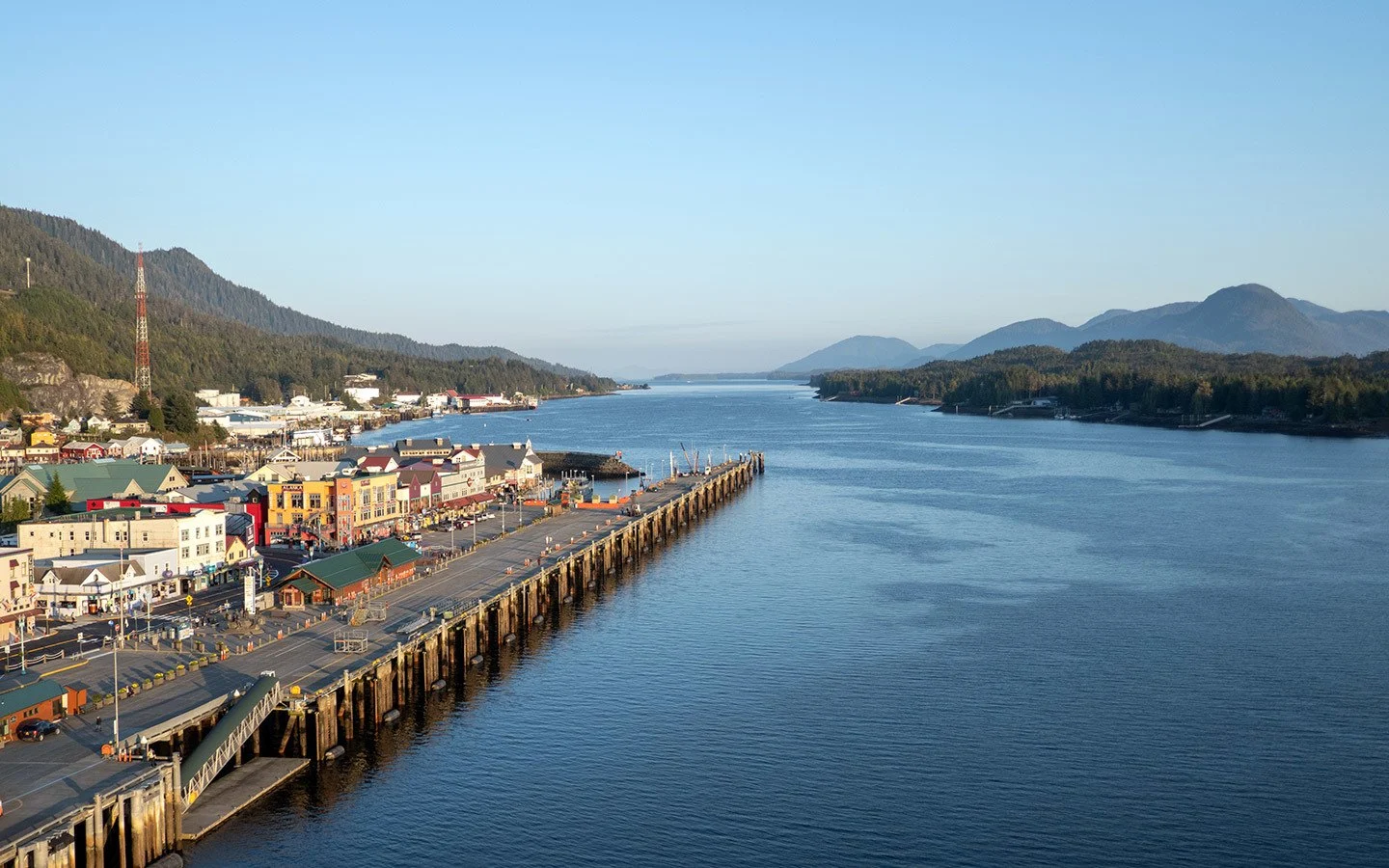
Sunset in Ketchikan
Pin it
* This article contains affiliate links, where I get a small commission at no extra cost to you, thanks.

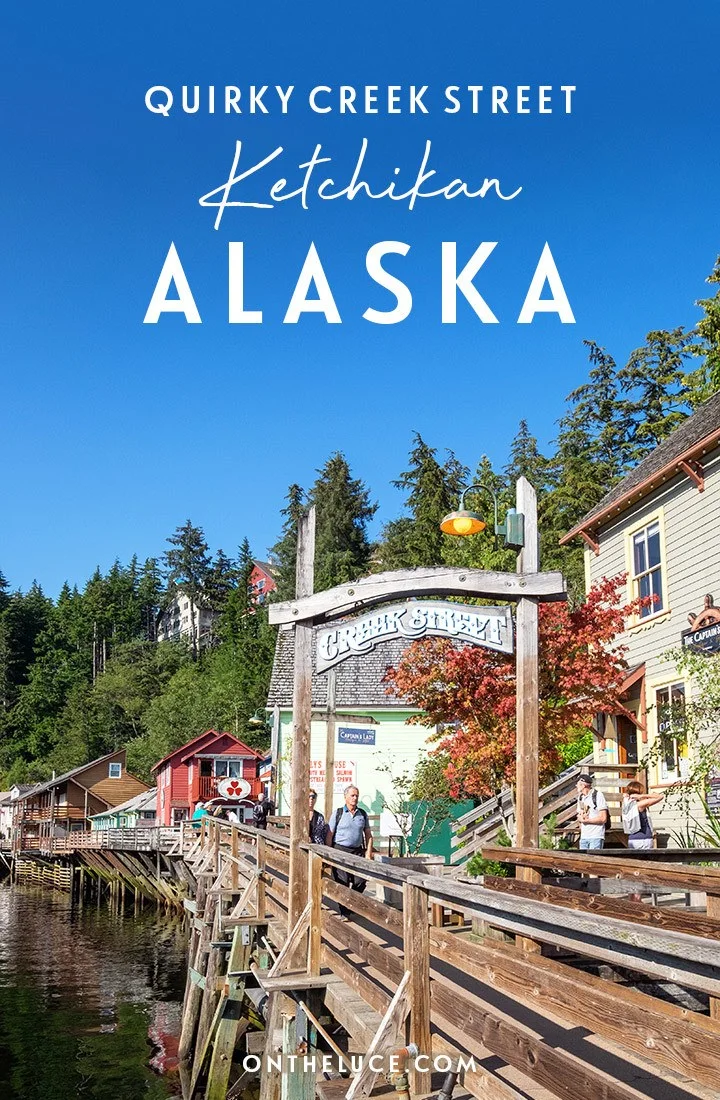
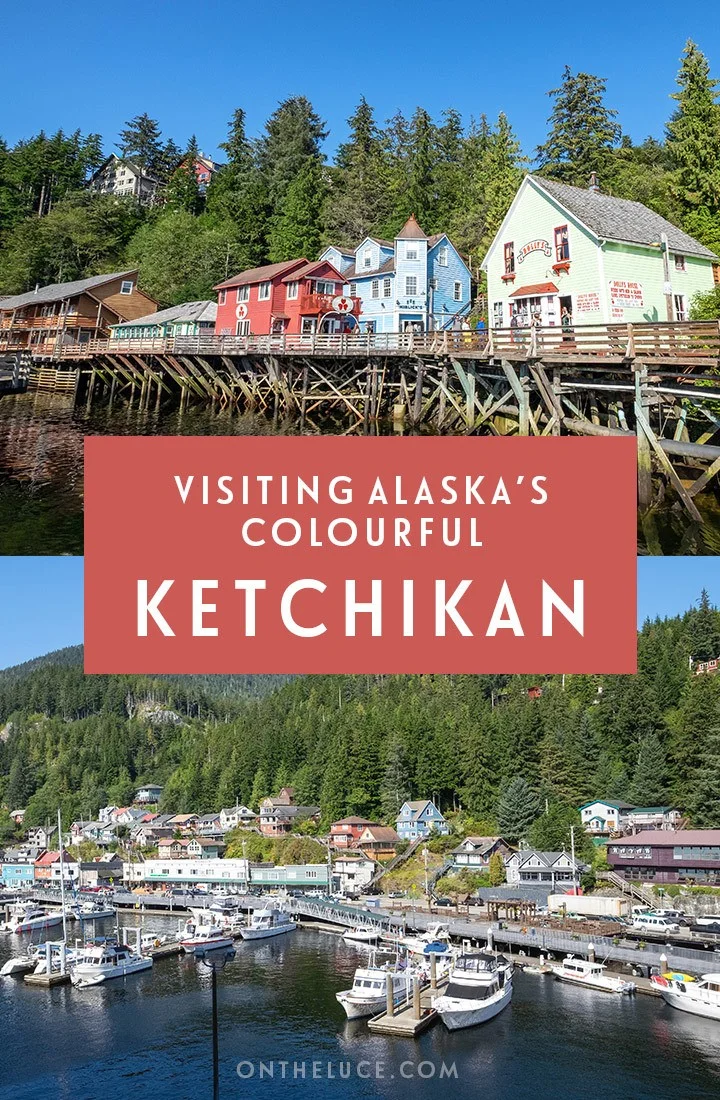
Anne
Friday 28th of February 2020
Alaska's one of my dream destinations. I'll get there one day, but in the meantime I'll just have to drool over posts like this.
Lucy
Monday 9th of March 2020
It's a fab place, with a great mix of scenic beauty and some quirky bits too, hope you get to see it someday!
oyoyinc
Tuesday 18th of February 2020
One of my bucket list! I'd love to visit ALASKA such a wonderful place
Lucy
Tuesday 25th of February 2020
Thanks, yes it's an amazing place!
Stuart Forster
Thursday 13th of February 2020
What a gorgeous looking place! I'd love to visit Alaska and delve into its history.
Lucy
Tuesday 25th of February 2020
It's definitely given me a taste for it, hope to get back to see some more by land next time.
akash
Thursday 13th of February 2020
I think it is the short story of alaska past to the future
Lucy
Tuesday 25th of February 2020
That's very true!